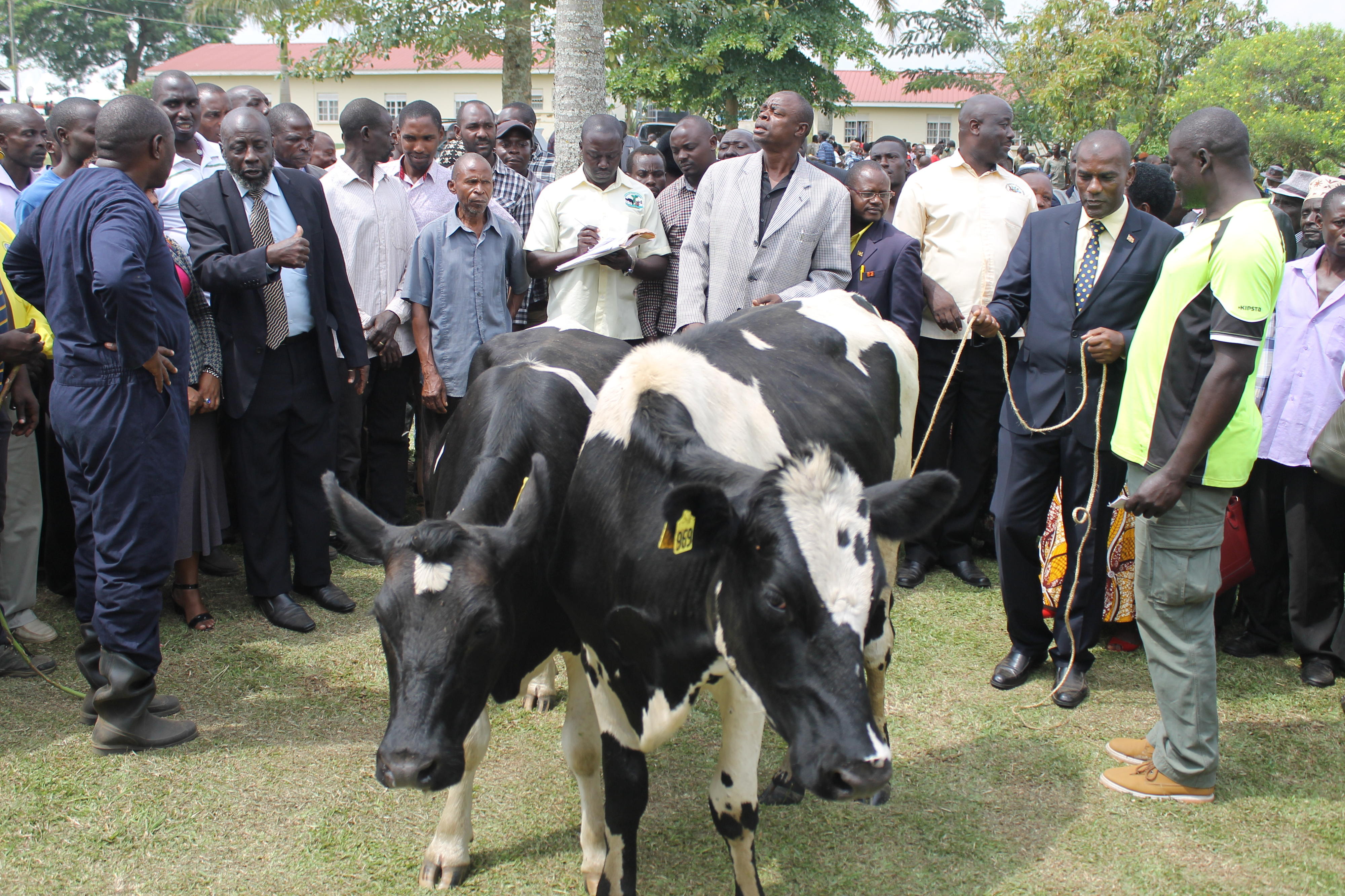Prime
Foot-and-mouth disease: What you need to know

Agriculture minister Frank Tumwebaze
What you need to know:
- In this explainer, Robert Madoi writes about a disease that could well cripple livestock industries dotting the country.
Foot-and-mouth disease or FMD was first confirmed in 1953, but it was not until 1964 that a legislation—the Animal Diseases Act—was considered. While FMD is endemic in Uganda, the latest outbreak threatens to thread through the country’s livestock industries with sinister repercussions. This is what you need to know.
What is foot-and-mouth disease and how does it spread?
Per a statement Agriculture minister Frank Tumwebaze made on the floor of Parliament on Thursday, the highly contagious viral disease affects cloven-hoofed animals including “cattle, goats, sheep, pigs, and wild animals such as buffaloes, deers, and antelopes.”
The telltale signs are blisters in and around the mouth area, feet, and, adds Minister Tumwebaze, “teats in female animals.” It has also been said that infected animals may drool or limp.
“The disease is transmitted through aerosols (fluid droplets) breathed out by infected animals and contact with affected surfaces,” minister Tumwebaze told the House.
After being excreted through breath, saliva, mucus, milk, and faeces, it might take up to four days for the virus to fully incubate. While the movement of animals is an undisputed superspreading event, even mundane acts like animals touching noses over a fence can transmit the virus.
What is the government’s game plan?
Minister Tumwebaze told lawmakers that the target “is to not only control the disease but eradicate it.” This, he hopes, will be actualised through a three-pronged approach. Since effective vaccines are such a powerful tool, the government plans to undertake “a bi-annual compulsory vaccination exercise of the entire susceptible animal herd in the country.”
The Agriculture minister also disclosed that “another control and eradication approach is the test and slaughter followed by safe disposal of the carcasses.” He described the compensation by the government to owners of “the affected animals [as] a very expensive practice.”
Then there is the quarantine, which Minister Tumwebaze says is “always imposed either in part or as a whole in the affected geographical location depending on the epidemiological assessment by the competent authorities.” This, he hastened to add, is only a “temporary measure to disrupt transmission but their duration depends on the discipline and compliance of the different stakeholders.”
“Our policy on FMD is for government to avail vaccines to farmers as a public good,” he revealed, adding, “This, however, has been insufficient and only covers 1.1 percent of the susceptible domestic animal population contrary to the recommended at least 80 percent coverage, leaving the rest of the herd vulnerable.”
Can FMD jump from animals to humans?
Although human infections are rare and believed not to result in grave illness, FMD’s zoonotic potential has been clinically documented. A 2012 peer-reviewed article titled Diseases of the Hematologic, Immunologic, and Lymphatic Systems (Multisystem Diseases) noted that “foot-and-mouth disease virus may be shed for as long as six months, and all body secretions and tissues should be considered contagious, including milk, semen, meat, and offal.”
It proceeded to add the virus has “zoonotic potential and cause[s] a disease in humans that resembles mild influenza. The diseases are self-limiting, but people can shed the viruses in sufficient quantities to infect other animals.” Humans can store the virus in the nose for up to a day and infect animals. On their part, animals can carry the virus for months, even years. Pigs have been widely described as “amplifying hosts” thanks to their ability to excrete voluminous quantities of the virus from their breath.
How many districts in the country have been affected by the current outbreak?
By Thursday, Minister Tumwebaze said they were 36 and counting. The districts that have been put under quarantine include: Budaka, Bukedea, Bukomansimbi, Bunyangabu, Butaleja, Fort Portal City, Gomba, lbanda, Isingiro, Kabarole, Kasanda, Kayunga, Kazo, Kiboga, Kibuku, Kiruhura, Kumi, Kyankwanzi, Kyegegwa, Kyotera, Luuka, Lwengo, Lyantonde, Mbarara, Mbarara City, Mityana, Mpigi, Mubende, Nakaseke, Nakasongola, Namisindwa, Ngora, Ntungamo, Rakai, Rwampara, and Sembabule.
Which districts are at risk?
Per Minister Tumwebaze the districts “under strict surveillance” are: Apac, Amolatar, Bugiri, Bushenyi, Butaleja, Hoima, Iganga, Jinja, Kabale, Kaberamaido, Kaliro, Kamuli, Kamwenge, Katakwi, Kasese, Kibaale, Kiboga, Kyenjojo, Mbale, Masindi, Mayuge, Mukono, Namalemba, Nakapiripirit, Palisa, Rukungiri, Sironko, Wakiso, and Soroti.
Will the current outbreak affect supply of meat and milk in the country?
Many scenarios could play out per agricultural analysts. For one, we could see a drop in meat and milk production. There could also be an influx of meat and milk on the domestic market in the event that an outbreak halts export markets.




